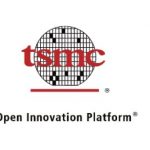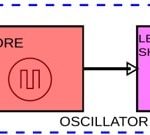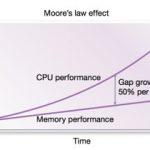Most people think that designing successful high speed analog circuits requires a mixture of magic, skill and lots of hard work. While this might be true, in reality it also requires a large dose of collaboration among each of the members of the design, tool and fabrication panoply. This point was recently made abundantly clear … Read More
Author: Tom Simon
Burning Man 2017 – My vacation is your worst nightmare
I often use this space to report on industry events I have attended and what I have learned at them. So, this article will be a slight, but not complete, departure from this. I am reporting on my experiences at Burning Man this year. For the unacquainted, Burning Man is a temporary city of around 70,000 people in a remote desert-like … Read More
Customizable Analog IP No Longer a Pipe Dream
Configurable analog IP has traditionally been a tough nut to crack. Digital IP, of course, now provides for wide configurability for varying applications. In the same way that analog design has remained less deterministic as compared to digital design, analog IP has also tended to be less flexible. However, the tide may be turning… Read More
HBM offers SOC’s dense and fast memory options
Dual in-line memory modules (DIMM’s ) with double data rate synchronous dynamic random access memory (DDR SDRAM) have been around since before we were worried about Y2K. Over the intervening years this format for provisioning memory has evolved from supporting DDR around 1995, to DDR1 in 2000, DDR2 in 2003, DDR4 in 2007 and DDR4… Read More
Making Sensors of the World
How many sensors do you think you own? Let’s start with your thermostat. It’s simple, right? You might guess one or two, and if you owned a 2[SUP]nd[/SUP] generation Nest you’d be wrong. It comes with a light sensor, heat sensor (in addition to temp), microphone, carbon monoxide sensor, smoke sensor, and occupancy sensor. Also, … Read More
Automotive System Reliability – ISO 26262 impacts IP and Tools
If you have been following the topic of ISO 26262, you now realize that IP, or even EDA design tools, developed with the highest quality standards still can’t be ISO 26262 certified. Recently I had a conversation with Kurt Shuler from Arteris about this topic. He is VP of Marketing at Arteris, and he is also on several ISO 26262 technical… Read More
Seeking Autonomy
I’d wager that if I mention autonomous vehicles, the first thing that you would think of would be autonomous cars. The truth is that we will see many other kinds autonomous vehicles in the years ahead. Their applications will range from package delivery to saving lives on the battlefield. Of course, to some extent they are already… Read More
Applying ISO 26262 in a Fabless Ecosystem – DAC Panel Discussion
The fabless movement was instrumental in disaggregating the semiconductor industry. Vertical product development at the chip and system level has given way to a horizontal structure over the years. This organization of product development has been doing an admirable job of delivering extremely reliable products. However… Read More
Machine Learning in EDA Flows – Solido DAC Panel
At DAC this year you could learn a lot about hardware design for AI or Machine Learning (ML) applications. We are all familiar with the massively parallel hardware being developed for autonomous vehicles, cloud computing, search engines and the like. This includes, for instance, hardware from Nvidia and others that enable ML … Read More
Embedded FPGA’s create new IP category
FPGA’s are the new superstar in the world of Machine Learning and Cloud Computing, and with new methods of implementing them in SOC’s there will be even more growth ahead. FPGA’s started out as a cost effective method for implementing logic without having to spin an ASIC or gate array. With the advent of the web and high performance… Read More














The Quantum Threat: Why Industrial Control Systems Must Be Ready and How PQShield Is Leading the Defense